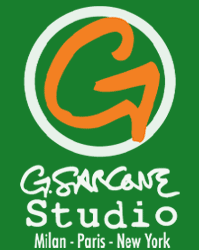
Français - Deutsch - Italiano |
||||||
Inspiration
for the
eye and the mind |
Wonder is the mover of the world. Wonder, imagination and inventiveness are the cornerstones of a meaningful life. Each helps to stimulate our mind to assure us of a fulfilling day, every day.
I am an experienced author and visual artist keen about communication. I love to work with brands, publishers and agencies to develop strong content, creative campaigns, and engaging products. My creations prompt the audience to look beyond what seems obvious, to think and to see outside of the box.
|
|
|
|
|
|
Ambigrams, Visual Wordplays An “Ambigram” is a particular typographical word (or group of words) that may be defined as an 'amphibian' visual creation because it occupies at the same time two different reading/meaning planes of a page. The distinctive feature of an Ambigram is that it remains unchanged even when inverted, or reveals the coexistence of a second word when either it is reoriented (by rotation or reflection) or when you simply change your vantage point.
Types of ambigrams • The most common type of ambigrams is the “rotational ambigram”. One form is a word or phrase written in such a way that it appears identical even when it is read upside-down. The other form of rotational ambigram is a word or phrase written in such a way that a second different word appears when it is rotated upside-down. • Another common type of ambigrams is the reflected or “mirror ambigram” which can be symmetrical with respect to a horizontal (lake reflection) or vertical axis (wall reflection). • The “figure-ground ambigram” is a particular kind of ambigrams where both positive (figure) and negative (ground or interspace) space read as words. |
|||||||
SOME
EXAMPLES |
|||||||
|
|||||||
|
|||||||
|
|||||||
|
|||||||
|
|
|||||||















 Ambigrams
may, in many respects, be compared to the art genre Cubism
as you can see and interpret several sides of an object in
just 2 dimensions. For most artists, ambigrams are a kind of
experimentation and merging of calligraphy/typography and optical
illusions. Ambigrams were certainly known in the past. One
of the earliest recorded examples is the ‘Chump matchbox’ design
published in the magazine Strand within the year 1908.
Ambigrams
may, in many respects, be compared to the art genre Cubism
as you can see and interpret several sides of an object in
just 2 dimensions. For most artists, ambigrams are a kind of
experimentation and merging of calligraphy/typography and optical
illusions. Ambigrams were certainly known in the past. One
of the earliest recorded examples is the ‘Chump matchbox’ design
published in the magazine Strand within the year 1908.







